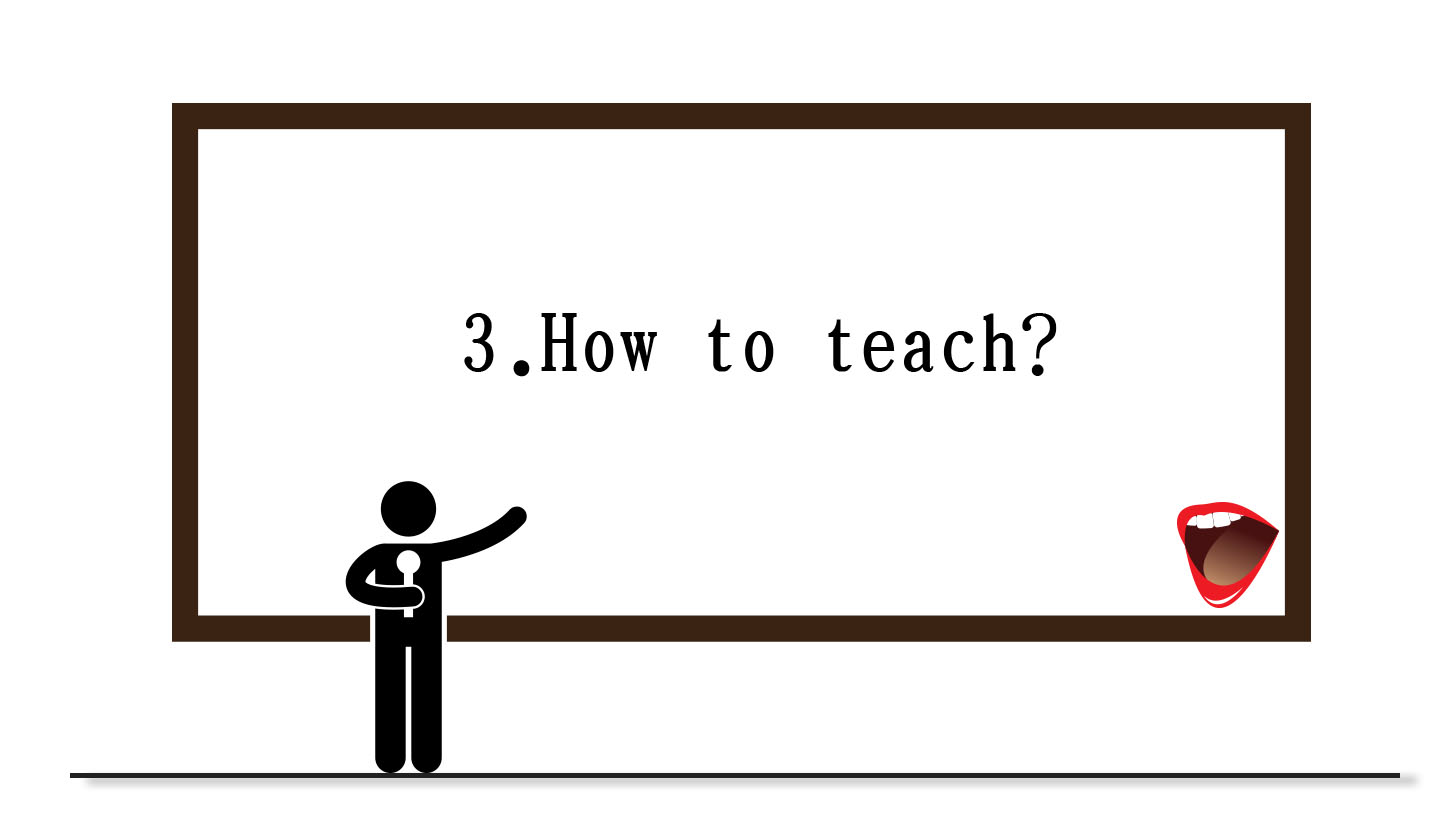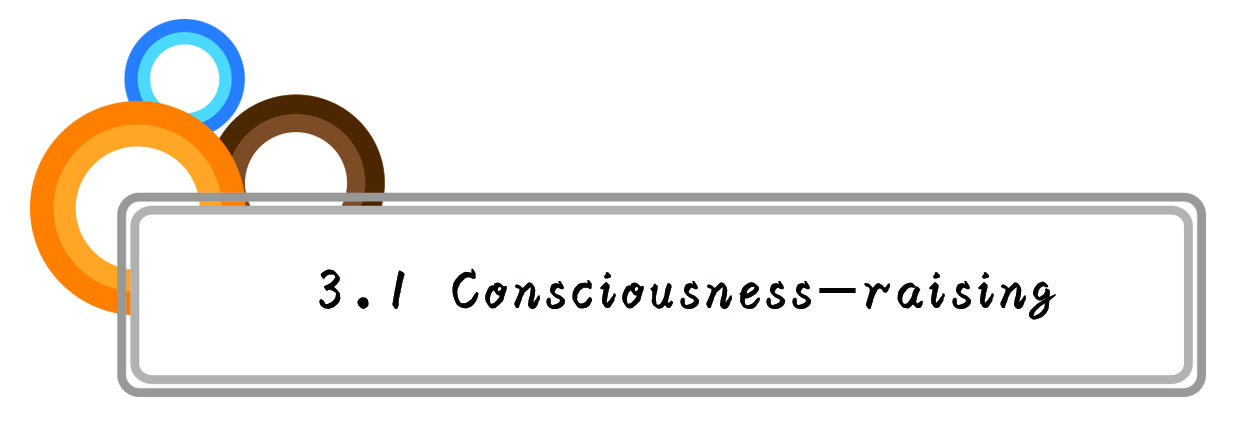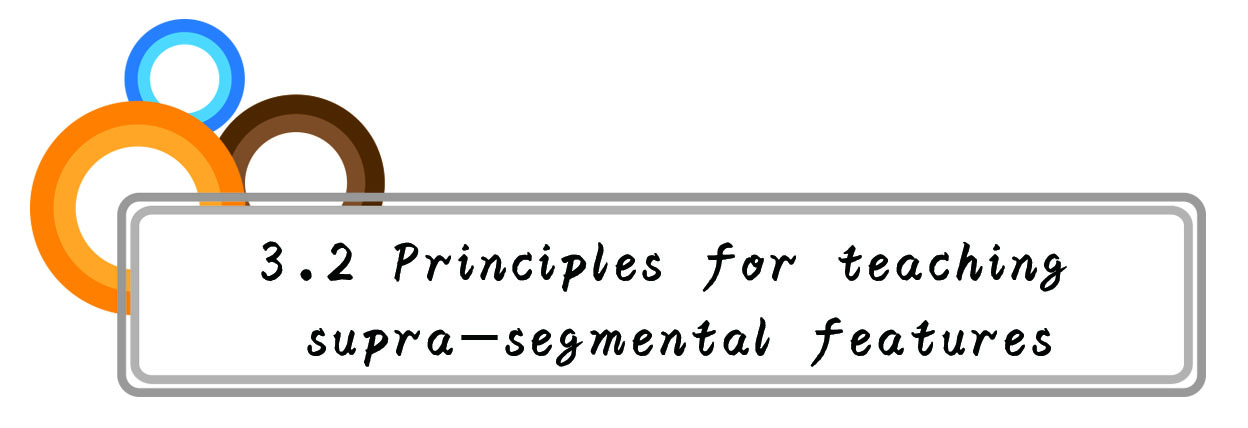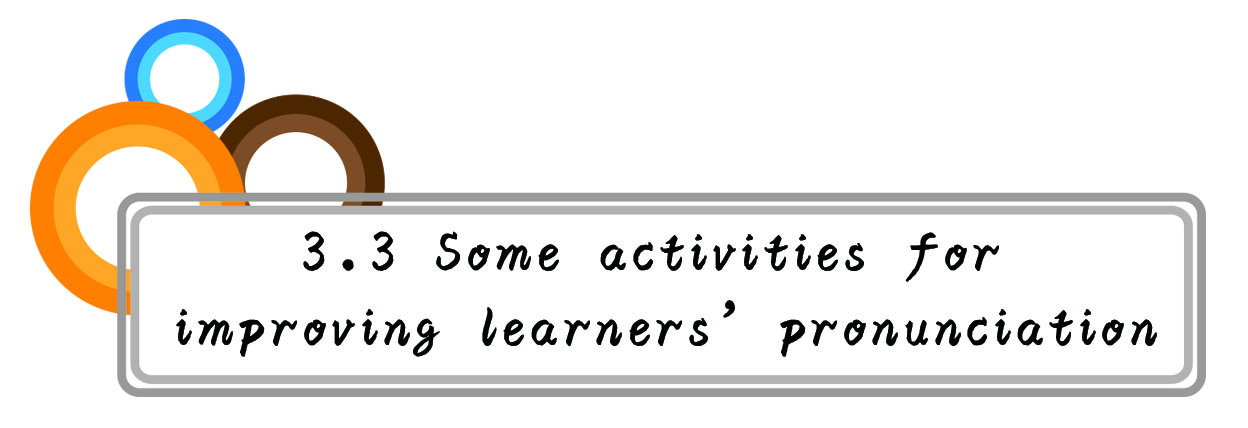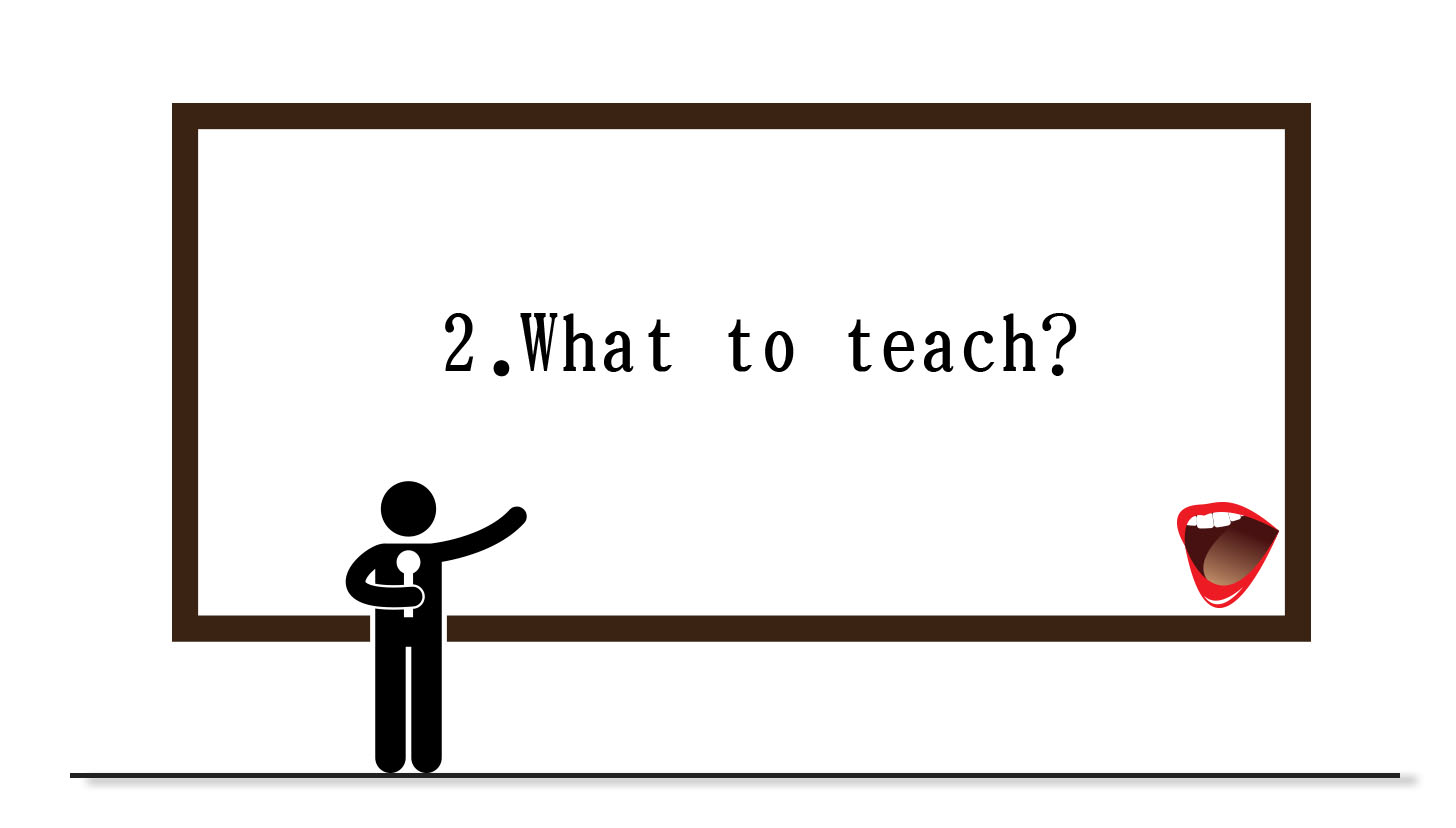


Stressed syllables are most often defined as those syllables within an utterance that are longer, louder, and higher in pitch. From the listener’s point of view, the most salient features of stress are probably longer vowel duration in the stressed syllable and higher pitch, e.g. `wonderful, response`bility,
`import(n.)/im`port(v.); `content(n.)/con`tent(v.)

The various stressed elements of each sentence. If learners process speech partly by recognizing syllable patters and stress, knowledge of these stored in the mental lexicon will facilitate quick comprehension, e.g.
`I can write./I `can write./I can `write. (Codes are the same, but the meanings are different because of the different sentence stress.


Word and sentence stress combine to create the rhythm of an English utterance—that is, the regular, patterned beat of stressed and unstressed syllables and pauses. This rhythmic pattern is similar to the rhythm of a musical phrase. Just as in music, English moves in regular, rhythmic beats from stress to stress—no matter how many unstressed syllables fall in between. This stress-timed nature of English means that the length of an utterance depends not on the number of syllables but rather on the number of stresses”. Therefore, English is a stress-timed language, while Chinese is a syllable-timed language. For example, in English the sentences should be read like the follows

But in Chinese the following sentences are just pronounced like that,
● 他买了一本你写的书。
`ta `mai le `yi `ben `ni `xie de `shu
● 他挥舞着手中的伞。
`ta `hui `wu zhe `shou `zhong de `san

A rhythmic group/unit is formed by a stressed syllable, together with unstressed syllables that may come before the stress and after it. Each rhythmic group occurs at, more or less, regular intervals, e.g.
◆ Rhythmic patterns
(1) I want to know. o O o O
(2) I think he will come. o O o o O
(3) I hope it will be fine. o O o o o O
(4) He started to talk to me. o O o o O o o
(5) Remember what your teacher tells you. o O o o o O o o o
(6) Show him up to his room. O o O o O o
(7) An apple a day keeps the doctor away. o O o o O o o O o o O
(8) Would you please open the window? o o o O o o O o

In order to follow the language rhythmic pattern, you have to change some sounds. In English, the phenomena of sound changes include:
(1) Weak form: Weak forms usually are structural words (or function words) occurring in the unstressed syllables which change from long vowels to short vowels, from short vowels to schwa. When native speakers pronounce “what do you”, they have shortened two long vowels in “do” and “you” into “waduyu”. “I cannot do it” is shortened into “I can’t do it” because the sound of later letter “o” in “cannot” is omitted.
(2) Elision: If they change completely, the sounds will disappear, which occurs the feature called elision, the omission of sounds. For example, castle, autumn. But there are lots of elisions occurring in common phrases or sentences. These phenomena are called Incomplete Plosion, e.g.
a(t) table, baske(t)ball, goo(d)bye
As(k) Bo(b) to si(t) behin(d) me.
I can never forge(t) the day when the bi(g) to(p) burnt.
(3) Linking: Within one sense unit, a NS always links the last sound of the first word and the first sound of the next word to form the feature of linking, which sounds like a whole unit. For example, “go on” is pronounced as “gowon” without an awkward pause between two words.
(4) Assimilation: Sometimes one sound will influence its neighbor sound or two neighbor sounds influence each other and become the third sound which is called assimilation, for example, “would you” is pronounced as “woulju”.


Intonation refers to the rise and fall of the pitch of the voice during speech. English is intonation language.

In intonation languages (e.g. English) the intonation pattern has a number of functions.
● It may distinguish grammatical constructions, as in question ‘Beer?’ versus statement ‘`Beer’;
●It may show discourse connections, for example, a new topic starting high and finishing low;
● It may hint at the speakers’ attitudes, say, polite “Good-`bye” versus rude “Good `bye!”

(1)Falling tone
* Implication—definiteness, completeness
* Types of sentences:
- Declarative sentences, e.g.
I am a teacher and you are all students➘.
- Imperative sentences, e.g.
Turn left➘!
- Special questions, e.g.
What does it mean by “rhythm” ➘?
- Alternative questions (after “or”) , e.g.
Which do you prefer➘, tea or coffee➘?
(2) Rising tone
* Implication—lack of definiteness, politeness, incompleteness, uncertainty
*Types of sentences:
- General questions, e.g.
Do you mind if I sit here➚?
- Disjunctive questions (tag question), e.g.
It’s rainy, isn’t it➚?
- Alternative questions (before “or”), e.g.
Which do you prefer, tea➚or coffee?
















